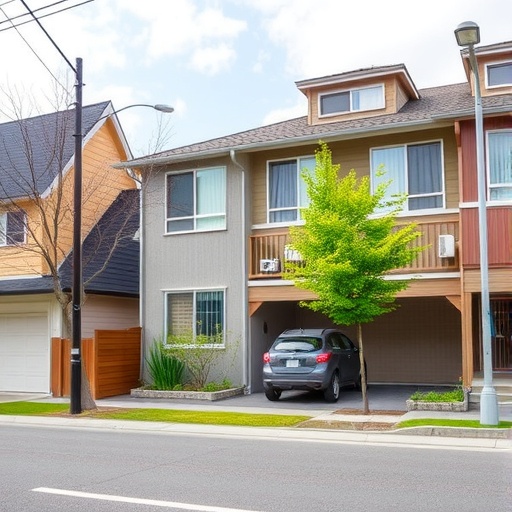Housing Type and Tenure Linked to Cardiovascular Mortality: Insights from a Comprehensive 6-Year Cohort Study in Japan
The environment in which individuals live profoundly affects their health outcomes, and emerging research increasingly illuminates housing quality as a critical determinant of cardiovascular health. In a compelling epidemiological investigation led by researchers at the Institute of Science Tokyo, Japan, nearly 39,000 older adults were tracked over six years to examine how combinations of housing type and tenure status influence cardiovascular mortality. Published in BMJ Public Health, the study unveils a sobering link: individuals residing in rental flats and owner-occupied detached houses confront significantly elevated risks of cardiovascular death compared to those living in owner-occupied flats.
This rigorous longitudinal analysis draws attention to how the intersection of physical dwelling characteristics and ownership patterns collectively shape cardiovascular disease (CVD) outcomes among an aging population. As Japan grapples with demographic shifts toward an older citizenry, the study underscores housing improvements as a tangible public health strategy to mitigate cardiovascular risk, particularly for men, who appear disproportionately affected.
A pivotal element in the study’s findings revolves around thermal indoor environments. Detached houses inherently face exposure on all sides to outdoor elements, resulting in colder and more thermally unstable indoor temperatures. Contrastingly, flats benefit from shared walls and insulation by adjacent units, buffering them against harsh temperature fluctuations. The study implicates these cold, unstable conditions—validated by prior Japanese research quantifying indoor temperature variance—as significant contributors to elevated blood pressure and its variability. Both are firmly established physiological precursors to heightened cardiovascular risk.
This environmental thermal stress uniquely exacerbates male vulnerability to cardiovascular death. The Japanese Society of Hypertension Guidelines reveal that men in their 60s and 70s typically exhibit higher systolic blood pressure than women of equivalent age groups. This sex-based disparity amplifies the impact of cold-induced hypertensive stressors, offering a plausible explanation for the observed gender-specific mortality patterns in this cohort.
Further compounding risks in rental flats, the research identifies systemic inadequacies related to insulation quality. The entrenched “split incentive” dilemma restricts landlords’ motivation to invest in energy efficiency upgrades since the occupants—tenants—primarily realize benefits like thermal comfort and reduced utility bills. National surveys highlight this disparity starkly: a mere 15% of rental dwellings possess double-glazed or double sash windows compared to 38% in owner-occupied homes, signaling entrenched infrastructural deficits that jeopardize tenants’ cardiovascular health.
The study champions public health policies that prioritize elevating residential thermal environments by adhering to the World Health Organization’s recommended indoor temperature threshold of 18°C. Maintaining ambient indoor warmth above this marker could substantially decrease blood pressure-related risks underlying strokes, myocardial infarctions, arrhythmias, and heart failure—integral manifestations of CVD mortality examined in this cohort.
This research represents a foundational contribution to the nascent but crucial discourse linking housing adequacy and cardiovascular morbidity and mortality. It offers empirical substantiation for incorporating housing improvements into traditional cardiovascular risk reduction frameworks, thus expanding the purview of preventive cardiology beyond individual behaviors and clinical interventions to include social and environmental determinants.
Co-led by Assistant Professor Wataru Umishio and collaborators spanning architecture and medicine disciplines, the study leverages nationwide mortality registries linked with detailed housing tenure and structural data—methodological rigor enhancing credibility and translational potential. Switzerland’s Institute of Science Tokyo, newly established through the merger of Tokyo Medical and Dental University and Tokyo Institute of Technology, fosters multidisciplinary inquiries that converge architecture, medical science, and epidemiology, exemplifying the integrated approach embodied in this study.
Beyond direct health implications, the research posits ancillary planetary health benefits by advocating for housing improvements that concurrently reduce energy consumption and greenhouse gas emissions. Enhanced insulation and thermal regulation not only safeguard cardiovascular health but also contribute to climate change mitigation—underscoring a synergistic intersection between human health and environmental stewardship.
This study’s findings signal urgent calls to action for policymakers, urban planners, healthcare providers, and the housing industry. For older adults living in Japan—and by extension similar aging societies worldwide—the provision of safe, warm, and thermally stable living environments emerges as an indispensable pillar of comprehensive cardiovascular risk management and public health strategy.
As epidemiological insight advances, the nuanced understanding obtained from this research challenges prevailing paradigms, urging cross-sectoral collaborations to address housing quality disparities. Ultimately, creating equitable access to well-insulated, thermally stable dwellings promises to reshape cardiovascular health landscapes, diminish morbidity burdens, and extend longevity in vulnerable populations.
Subject of Research: People
Article Title: Combination of housing type (detached houses vs flats) and tenure (owned vs rented) in relation to cardiovascular mortality: findings from a 6-year cohort study in Japan
News Publication Date: 8-Sep-2025
Web References: http://dx.doi.org/10.1136/bmjph-2025-003073
Image Credits: Institute of Science Tokyo
Keywords: Cardiovascular disorders, Diseases and disorders, Climate change, Energetics, Health and medicine, Health care




